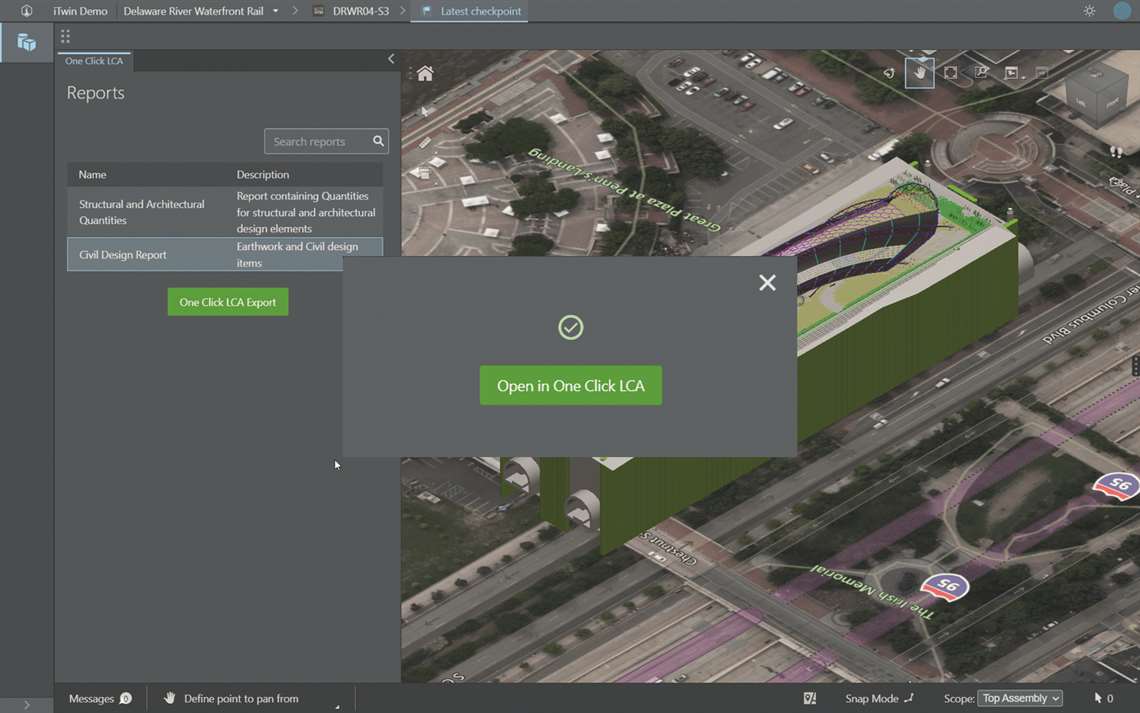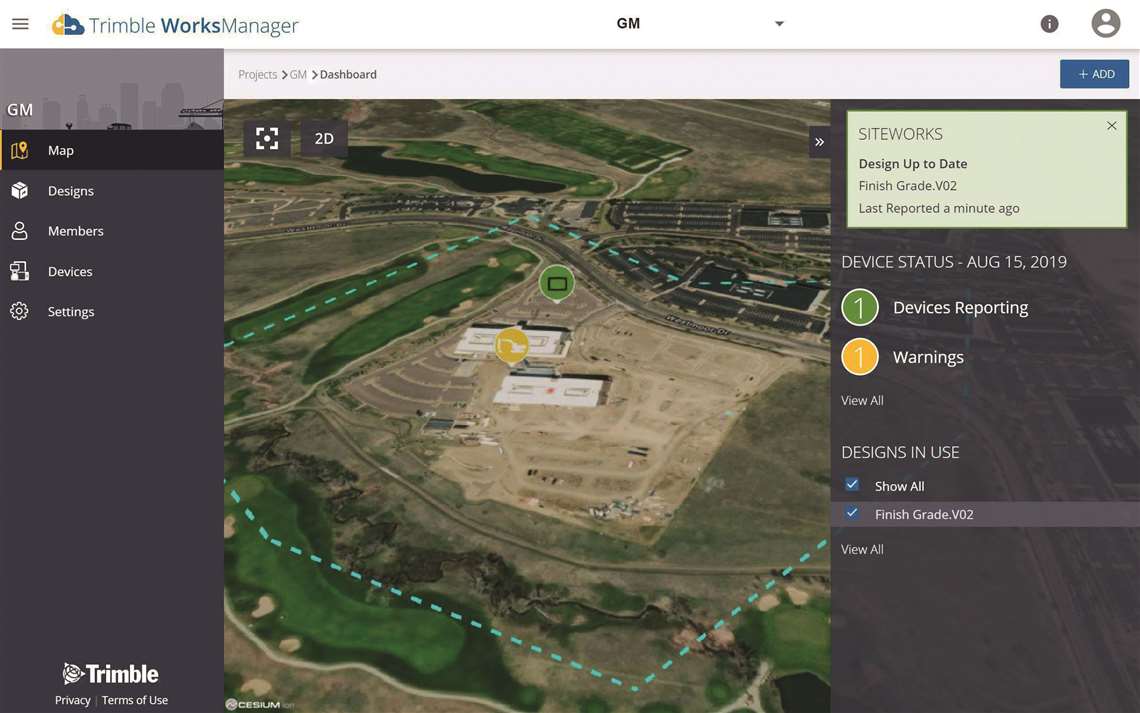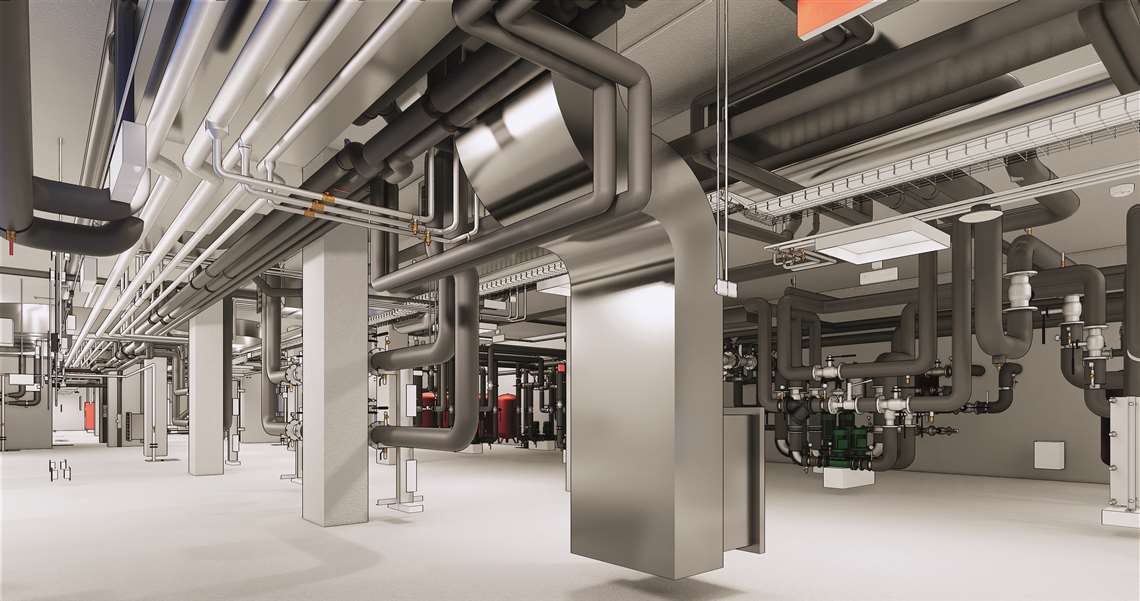The software doing the hard work
22 March 2022
Application software may not be the first thing that springs to mind in a discussion about modern construction, but it is playing an increasingly important role in the delivery of Europe’s major infrastructure projects, as Mike Hayes reports.
We have a tendency to label the construction industry as the tortoise in the race to digitalisation. Nevertheless, with so many aspects of the construction process now potentially digitised, it is hard to know where to begin describing them.
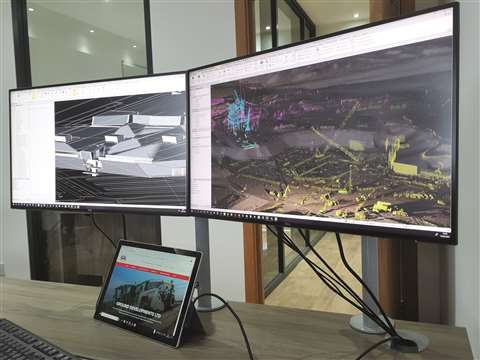 An example of GDL’s set-up, with monitors utilising Trimble software to monitor sites (Photo: GDL)
An example of GDL’s set-up, with monitors utilising Trimble software to monitor sites (Photo: GDL)
One certainty is that change is coming; this can be seen through the rapid growth of construction technology start-ups and the growing movement of large software companies into the construction arena.
And this is no surprise, given the potential revenue to be made from a mammoth global industry facing significant productivity, efficiency and sustainability challenges.
BIM
Building Information Modelling (BIM) software is often at the centre of construction’s digital debate and it’s a good bellwether for software’s impact on the industry. The global market for BIM software, for example, is expected to be worth around €19 billion by 2025, according to research from industry analyst Cambashi. That’s an impressive increase of over €6 billion in five years.
Petra Gartzen, lead analyst at Cambashi, said, “Remote working trends resulting from the global pandemic, as well as government initiatives and regulations, are driving digital transformation in the construction industry.
“This in turn is accelerating a growth in demand for BIM software, enabling the construction industry to evolve from the ‘Stone Age’ to the ‘Digital Age’.”
According to Cambashi’s Employment dataset, around 200 million people currently work in a BIM-related profession, incorporating architecture and design, civil engineering and structural engineering services, as well as building owners and operators.
While BIM is a constant talking point for the industry, it’s worth noting that construction software is also playing an increasingly important role in more specialised areas of the industry.
Technology on the ground
In the UK, leading ground engineering contractor GDL has been developing its digital technology arsenal for the past decade.
GDL projects director Wayne Barr says it was clear even then that software applications had the potential to immediately improve productivity.
Currently, the company is operating with a suite of Trimble packages, including Earthworks, Works Manager and WorksOS.
Barr says of Trimble Works Manager, “It’s a cloud-based software system we use to upload our designs and our files that go onto machines. With a click of a button, we can send a new design to a machine on site.
GDL started using Works Manager in 2020 and Barr says the improvement to operations was seen within weeks, “The immediate data transfer was impressive. The quality assurance was a big part of that, because we knew we were working to the latest design.
“As soon as a new design supersedes an older one, we can upload it to the machine and dump the old. We can view data from the machines on site in real time and if the machines are all green, we know they’re using the latest available design; if a machine is orange, we can contact the team immediately and check why that machine is using an older design.”
Barr says the system means potential issues are caught before they happen.
“We can download data direct from the machines to the office in Works Manager,” he says, “and with external engineers using Works Manager on a tablet, they can also send their survey data straight to the office.”
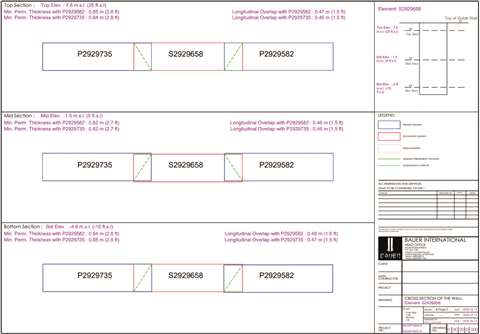 Bauer’s b-project data management software can collect, store and present information on many elements of a project (Photo: Bauer)
Bauer’s b-project data management software can collect, store and present information on many elements of a project (Photo: Bauer)
Recently, GDL started working with Trimble WorksOS – offering a live recording of data from machines, as well as delivering cut-and-fill data as it happens. This data is then sent to the cloud with volume analysis from the site.
“That’s an amazing piece of tech in terms of estimations we can get, with site managers able to see what’s happening on their site right now – how much cut, how much fill, if people are working in the wrong areas and what levels machines are at,” says Barr.
“It’s basically total monitoring of a site in real time.”
Using the WorksOS software, GDL can make decisions on planning and programming for work coming up in the coming weeks and months and be confident about how much resource is needed on site.
Barr says, “We can accurately forecast when jobs will be finished and demonstrate to site managers whether we do or don’t need more equipment to be able to deliver jobs ahead of schedule.”
In conclusion, Barr says, “The investment is quite a lot, but the return over a year or two is worth it, but only if its being used to its fullest capabilities.”
Organised chaos
When it comes to major infrastructure projects, there are few who still doubt the potential benefits technology can bring to the construction process.
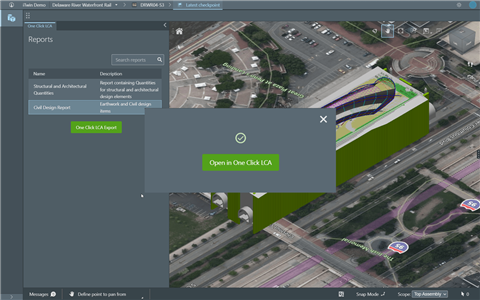 Bentley Systems’ iTwin platform now has the capability to calculate the embodied carbon of a construction project (Photo: Bentley Systems)
Bentley Systems’ iTwin platform now has the capability to calculate the embodied carbon of a construction project (Photo: Bentley Systems)
A large-scale project can involve the coming and going of many thousands of workers and many more pieces of heavy equipment.
Add to this hectic mix potentially millions of tonnes of cement, steel, timber, glass, plastics, etc, and the logistical challenges are undeniable.
Illustrating the need to get on top of this organised chaos, a recent KHL survey saw contractors rank project management software as the number one technology item on their shopping list.
That’s ahead of machine control, BIM and alternative power, which, of course, includes the much-discussed electric equipment.
This may seem surprising, although perhaps not when we consider that those same contractors also ranked increased productivity as the number one challenge they face today.
Twinning a construction site
Bauer is a specialist foundations contractor, known for providing innovative techniques and utilising technology to undertake projects with optimum efficiency.
In 2019, Bauer announced its b-project data management software, which covers various areas of application.
At the beginning of the construction project, design data from the construction office is sent directly into the system.
Machine production data, which is generated during the construction works, are then also imported into b-project, to be analysed and visualised to the site manager. In addition, sample lists and technical progress reports are automatically derived from the data. Digital machine data generated by drilling equipment are the basis for the production reports created in b-project.
Bauer says the automated re-entering of the actual production data into the quality documentation and performance reporting forms the central interface of the system.
Using b-project, the company is able to directly link the target data from the planning phase with the actual data from the construction work, for analysis.
Automating this process significantly reduces the documentation and testing effort and supports a standardised, automated and effective site optimisation process for the site.
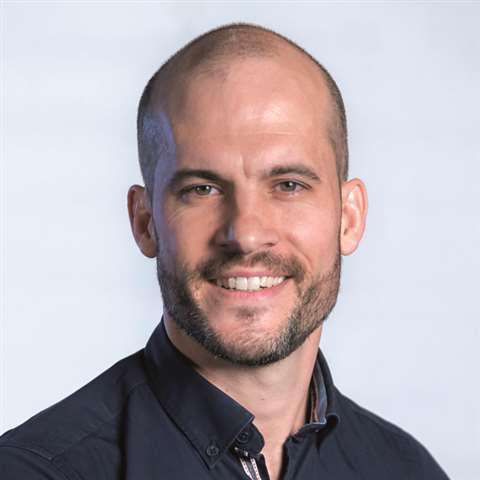 Anton Turrell, director of transformation with Jacobs (Photo: Jacobs)
Anton Turrell, director of transformation with Jacobs (Photo: Jacobs)
Furthermore, an overview of the current status of the work can be viewed using the software. By providing analyses for process control, process optimisation and accounting through b-project, virtually the entire site process can be digitally recorded and visualised.
In short, the b-project data management software creates a digital twin of the works.
Marcus Daubner is Bauer’s head of digitalisation, says, “The digital twin reduces the effort for capturing, linking and evaluating different data so that reliable and quick decisions can be made on possible optimisations.”
Exciting stuff – and in the next expansion stage, Bauer says it will begin using artificial intelligence to support these decision-making tools.
Twins for sustainability
One of the leading developers of digital twins, Bentley Systems, recently announced a development of its iTwin platform, which now allows for life cycle assessment and embodied carbon calculation capabilities.
To do this, Bentley collaborated with One Click LCA, a developer of construction lifecycle assessment software, which can be used as a tool to decarbonise the entire construction value chain.
Bentley says these tools will be an “essential enabler and accelerator of carbon transparency”, which may sound like a mouthful, but could be crucial for European construction firms as the EU moves towards further environmental legislation.
 Combining workflows into a central cloud-based platform can create one unified source of truth, says Jacobs’ Anton Turrell (Photo: Adobe Images)
Combining workflows into a central cloud-based platform can create one unified source of truth, says Jacobs’ Anton Turrell (Photo: Adobe Images)
Kaustubh Page, director of product management for the Bentley iTwin platform, says, “Tracking the environmental impact of an infrastructure project involves a constant stream of design changes coming from various engineering disciplines. By unifying these data streams, users can quickly create a quantity takeoff report at the right aggregation level required for LCA [life cycle assessment] calculations, while reducing the lifecycle assessment workflow from weeks to hours. We are excited to see engineering firms build fully automated lifecycle assessment workflows for their infrastructure projects.”
Kelvin Saldanha, an associate at the engineering multinational WSP, said, “iTwin has quickly become an indispensable platform on some of our largest projects. It has made our federated models even more accessible and has brought a new simplicity to multidisciplinary coordination, making for more robust design reviews, conflict detection, and issue resolution.”
Saldanha went so far as to call the Bentley-One Click collaboration a ‘game-changer’ in terms of its ability to aid its carbon calculations.
Source of truth
No conversation about software or digital technology more generally can be complete without mentioning the issues of compatibility.
Having technology solutions from different providers can be problematic if those solutions fail to connect with each other in a meaningful way.
Jacobs is an engineering group with a formidable track record in the use and analysis of digital processes in construction.
Anton Turrell, director of transformation with Jacobs’ Major Projects & Programmes Group, told CE, “At Jacobs, we’re using machine learning to integrate systems and leverage predictive analytics to empower better future decisions.
Capital projects and programmes are becoming increasingly complex, meaning greater challenges in assessing true progress status. This challenge includes schedule, cost and risk updates because of the many variables and supply partners.
“Machine learning can process data from previous projects and transform it into prediction models using pattern recognition. One of the leading AI-powered construction simulation and optimisation platforms is already cutting costs by 11% and build time by 17% on average.”
Turrell went on to say, “Siloed data and incompatible software will impact progress on any programme. Importing data from different sources and collating insights takes up significant time and resources, as well as opening up opportunities for human error.
“By combining project management workflows into our central cloud-based platform, data can be united from disparate systems. This creates one unified source of truth, a line of sight that’s shared in real-time. It closes communication gaps and offers improved data analysis.”
Tech on track
Construction projects can often be sensitive, from a human, environmental or socio-political perspective.
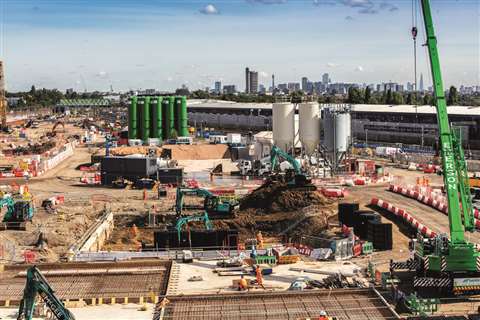 Construction work is ongoing on the long-running HS2 project (Photo: HS2)
Construction work is ongoing on the long-running HS2 project (Photo: HS2)
The bigger and more expensive the project, the more media coverage it will get – and the more it is likely to divide public opinion.
The High Speed Two rail project in the UK (HS2) is just such a project, with its skyrocketing costs and late delivery just two causes for public concern.
After falling foul of the media on numerous occasions, HS2 is turning to software specialists to help it gain trust with the public.
It recently signed a contract with the Access Intelligence Group, a company that will, among other things, provide media and political monitoring software.
The system reportedly aims to monitor news coverage of HS2 and press enquiries, but also offer advice on ‘lines to take’ in certain circumstances, as well as monitoring stakeholder engagement and the political landscape.
Another deal recently concluded by HS2 will see Brandwatch use its software to monitor the project’s social media coverage.
The company says of its services, “Crawling millions of online sources, including all major social networks, [such as] Twitter… news and review sites, blogs and forums, [we] provide owned and earned social media tracking and market research, including image recognition.”
Leica’s machine control software
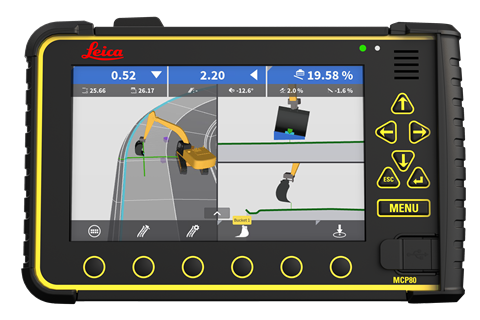 Leica’s MC1 software, displaying on an MCP80 tablet (Photo: Leica)
Leica’s MC1 software, displaying on an MCP80 tablet (Photo: Leica)
Leica has launched a new software platform that it says can be used in conjunction with all machine control solutions.
The MC1 platform, says Leica, is able to guide and automate all heavy construction machines.
The machine control software assists the machine operator by comparing the design model to the actual position of the machine’s bucket, blade, etc, then automatically controlling the position of the machine’s cutting edge for increased efficiency.
The MC1 software can be loaded onto Leica’s MCP80 panel and MDS Series docking station, allowing interchangeability between machines.
Completing the line-up, the MC1 platform is supported by the cloud-based Leica ConX collaboration platform, which allows for the managing and share job-related data with all stakeholders on a project.
STAY CONNECTED



Receive the information you need when you need it through our world-leading magazines, newsletters and daily briefings.
CONNECT WITH THE TEAM









